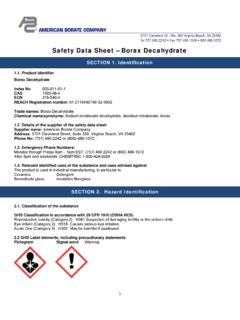Transcription of Customer Service Quality Y - Retail Banking Academy
1 DO NOT COPYRETAIL Banking I152 Retail BANKINGACADEMYC ourse Code 107 - Customer Service Service QualityDO NOT COPY153 Retail Banking Academy , 2014 Retail Banking IRETAIL BANKINGACADEMYC ourse Code 107 Customer Service QualityIntroductionAs was emphasised in the Marketing module, Banking services (as opposed to products) are intangible and hence the delivery ( , Customer experience) is more important than it would be for traditional businesses that deal in tangible products. A predominant issue in Retail Banking (as in all Service industries) is summarised as follows:It is not only what is delivered but also how it is delivered and by asserted by Chowdhary and Prakash (2007)* the academic literature has yet to arrive at a consensus on a clear definition of Customer Service Quality . A common definition, proposed by Parasuraman, Zeithaml and Berry (1985) is that Customer Service Quality is the difference between the bank s performance as perceived by the Customer and the level of performance that the Customer expected.
2 There are two implications of this definition: firstly, Service Quality does not necessarily mean best in class but only Quality performance with respect to Customer expectations; second, as pointed out by Poll and Boekhurst (2007) , Quality for customers in one market segment does not mean the same for another. In the consideration of the family life cycle, there is evidence that expectations of Service Quality vary by segments. What the senior citizen sees as excellent Service may lie in the form of high-touch branch personnel with whom they feel comfortable asking important financial questions such as with product experts, yet to the young adult or student, excellent Service may lie in the form of mobile Banking access and online chat with a Service provider. * Nimit Chowdhary, Monika Prakash, Prioritizing Service Quality dimensions Managing Service Quality , Vol. 17 Iss: 5, - 509 (2007).
3 Parasuraman, Zetthami and Berry, A conceptual model of Service Quality and its implications for future research . Journal of Marketing 49 (Fall): 41-50 (1985). This is commonly called disconfirmation , a concept that implies customers psychologically interpret the discrepancy between the expectation and actual perceived performance. Poll and Boekhorst, Measuring Quality : Performance measurement in Libraries. 2nd revised ed. (Muchen: Saur, 2007).Course Code 107 - Customer Service QualityDO NOT COPYRETAIL Banking I154 Retail BANKINGACADEMYC ustomer segments which are based on current or potential profitability can also differ in what they consider Quality Service . High-value clients tend to classify excellent Service Quality based on their access to a high-touch relationship manager and professional assistance, where the mass market consumer client would define Service Quality as having access to the most convenient locations and lowest price.
4 Within the small business segment research we find similar differences. The measurement of excellent Service Quality to the SOHO (Small Office Home Office) client can be in the ease of online access or consolidation of the business and personal accounts, where the larger small business may consider the availability of a relationship manager that knows their business as a minimum requirement of Service Quality . The professional literature has documented several benefits to the bank for providing a high level of Customer Service Quality , ( , Dabholkar, Shephard and Thorpe, 2000,* Zeithaml, 2002 ). These benefits include: Customer retention leading to repeat business Customer advocacy in the form of referrals and hence Customer acquisition Avoidance of price competition since Customer Service Quality becomes a differentiation strategy Employee engagement since there is evidence of a feedback loop from satisfied customers to engaged employees Cost reduction and hence increased profitability since increased productivity is associated with lower average rest of this module is organised as follows:Chapter 1: A Brief Historical Journey Customer Service in Retail Industries in the US and EuropeChapter 2: Drivers of Customer Service Quality Chapter 3: Linking Customer Service Quality to Customer Satisfaction Chapter 4: Linking Customer Satisfaction to Customer LoyaltyChapter 5.
5 Resolution of Customer Service Failures The GAPs ModelThis module concludes with a summary and review order to place Customer Service Quality in Retail Banking in context, we take a historical journey into the evolution of Customer Service in Retail industries to ascertain what lessons can be learned.* Dabholkar, P. A, Shepherd, CD, Thorpe, D, A comprehensive framework for Service Quality : an investigation of critical conceptual and measurement issues through a longitudinal study . Journal of Retailing 76(2), 139-173 (2000). Valarie A Zeithaml, Service excellence in electronic channels , Managing Service Quality , Vol 12 Iss: 3, - 139 (2002).Course Code 107 - Customer Service QualityDO NOT COPY155 Retail Banking Academy , 2014 Retail Banking IRETAIL BANKINGACADEMYC hapter 1: A Brief Historical Journey Customer Service in Retail IndustriesThe emergence of Customer Service as a key differentiator can be traced back to the last third of the 19th Century in Chicago, where a city grew out of the ashes of a devastating fire that had levelled it in 1871.
6 One of the industries that most benefited from the revitalised city was retailing. There were households to be re-established and homes to be redecorated and modernised. An entrepreneur by the name of Marshall Field, then a young but hardy veteran of retailing in Chicago, understood that most of his sales were to the women in Chicago who were spearheading the revitalising of local households an early recognition of the value of knowing your Customer . Field had already founded a multiple-line Retail establishment, and forged a new path in retailing, purveying a sense of Service in addition to an impressive array of clothing and home apparently told employees at his eponymously named establishment that the Customer is always right , and created a consumer-friendly environment. That saying became legend throughout the retailing world, and a way of life among shoppers in Chicago and the American Midwest.
7 The approach endured for more than 125 years, through three acquisitions and several financial panics and disruptions. There was tremendous uproar in Chicago in the early 21st Century when, after all those iconic years as the city s leading retailer, its latest purchaser, Macy s, (ironically another long-term, self-named American retailer) decided to change the Marshall Field s name to its , Harry Selfridge, who worked for Marshall Field, found himself managing Field s dry goods department. Some have credited Selfridge with coining the phrase the Customer is always right ; in any event the emphasis on Customer needs took shape. Selfridge left for London and in 1909 founded a Retail store that still thrives today, urging his staff to assist customers, with a commitment to serving its customers retailing needs better than any other department sar Ritz took a different path on the broader Service road, first as a restaurateur and ultimately as a hotel owner.
8 The hospitality business in the late 19th and early 20th Centuries was, in many ways, similar to the industry in the late 20th Century. The key difference was that there were many more providers, with proximity to transportation centres often being the only real differentiating factor among them. Ritz saw additional opportunities for material change, and his success with his namesake establishment in Paris paved the way for chances in other Code 107 - Customer Service QualityDO NOT COPYRETAIL Banking I156 Retail BANKINGACADEMYRitz opened The Ritz hotel in London, and imported his winning slogan Le client n a jamais tort (the Customer is never wrong) in 1906. His legacy of luxury hospitality and a knack for knowing how to please his guests has survived for more than a century, and The Ritz-Carlton Hotel Company has developed an extremely successful ancillary business: Customer Service training for a variety of industries, including Banking .
9 Several banks around the world have instituted The Ritz-Carlton Service Quality training programme. In fact, a few require every staff member to complete the training. During this training, employees learn how to never say the word no . There is always a way to turn a negative into an option for the Customer . Another training point is to show the Customer to their destination, you never point them to their destination . Whether it was the hotel mechanic or housekeeper, if a Customer asked for directions to a point in the hotel, you would find them escorting the Customer . This seems like a minor detail in the world of Banking , but the results in the eyes of a Customer are 1963, Carrefour (founded by Marcel Fournier and Louis Deforrey) opened the first so-called hypermarket, combining a supermarket with a department store. That meant huge footprints, usually in suburban areas, a recommitment to Customer Service and attention to new elements of Service parking and what was called spectacle.
10 Echoing the calls of the merchandising guru Bernardo Trujillo, Carrefour management became experts at siting their stores and delivering against the expectations of their the Fournier-Deforrey combination was perfecting its Service delivery, at first in France, and then around the world in San Francisco, the Bank of America was also entering the fray. Bank of America, which was one of the few large banks that actually served Retail Banking customers relatively well, had noticed the increasing credit card activity among retailers in the US, and the growing success of the Diner s Club charge card, which had been introduced in 1950. Bank of America had lending experience and felt that there wasn t a need for balances to be repaid each month, like Diner s Club, but that the interest charges on revolving monthly balances could be quite profitable. The bank also believed that it could trade on the market value of its brand and convince local merchants to accept its new BankAmericard for purchases by its card-holders.





